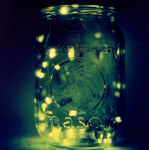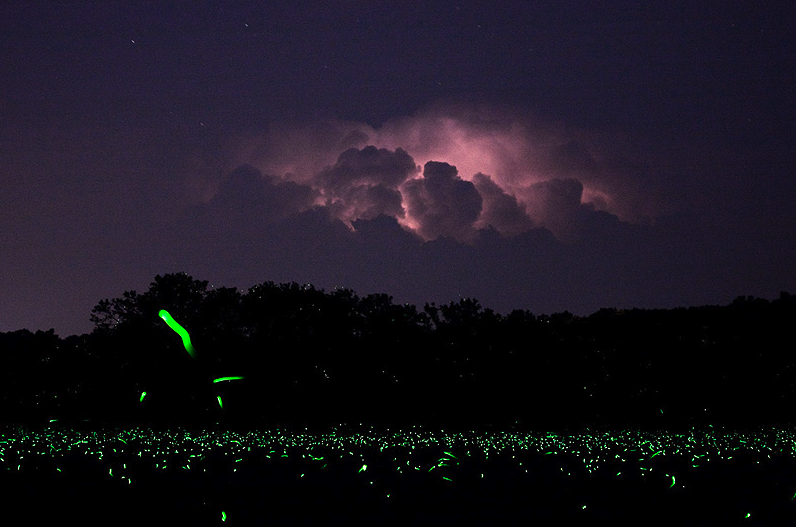 As a kid growing up in Iowa every summer we would be treated to a nightly light show that would fascinate any child and adults too. Lightning bugs or Fireflies would fill the yard and corn fields with their Morse code flashes. We kept jars on the back porch and when darkness fell we would end our long summer days with a lightning bug round up. We also would smear them all over our hands thinking they would glow too but that never worked. The harmless bug was only trying to attract a mate but we would spend countless hours in amazement and wonder as to how such an amazing creature came to be.
As a kid growing up in Iowa every summer we would be treated to a nightly light show that would fascinate any child and adults too. Lightning bugs or Fireflies would fill the yard and corn fields with their Morse code flashes. We kept jars on the back porch and when darkness fell we would end our long summer days with a lightning bug round up. We also would smear them all over our hands thinking they would glow too but that never worked. The harmless bug was only trying to attract a mate but we would spend countless hours in amazement and wonder as to how such an amazing creature came to be.
I never understood the firefly and why it glowed and scientist today aren’t exactly sure how they turn on and off their beacons but they do have the chemical combination figured out as to what makes them glow.
The enzyme luciferase acts on luciferin, in the presence of magnesium ions, ATP (adenosene triphosphate), and oxygen to produce light.
www.wikipedia.com
 and is very efficient. A light bulb in your home can only use 10% of the energy that goes through it to produce light, the rest is turned into heat. A lightning bugs energy is used at 90% to create light.
and is very efficient. A light bulb in your home can only use 10% of the energy that goes through it to produce light, the rest is turned into heat. A lightning bugs energy is used at 90% to create light.
Even the larva glow and are sometimes referred to as ‘glow worms.’ They usually live in the soil or under bark and will hunt down snails and worms for food. Adults are thought to be nectar feeders for the most part but their mouth parts indicate they too can be predacious. Females that have already mated will sometimes flash signals to a would be male suitor only to lure him in where she will kill and eat him.
 Not all fireflies glow but all known larva do. The adults may live up to 3 months and soon after mating the female will lay her eggs in the soil or under some loose bark. The eggs hatch in 3 to 4 weeks and the larva will feed until the end of summer. The larva ‘over winter’ by burrowing in the ground or under bark and emerge in the spring. The larva will feed for a few weeks and then pupate which lasts about 2 weeks. Emerging as adults they begin the process over again.
Not all fireflies glow but all known larva do. The adults may live up to 3 months and soon after mating the female will lay her eggs in the soil or under some loose bark. The eggs hatch in 3 to 4 weeks and the larva will feed until the end of summer. The larva ‘over winter’ by burrowing in the ground or under bark and emerge in the spring. The larva will feed for a few weeks and then pupate which lasts about 2 weeks. Emerging as adults they begin the process over again.
In my area there aren’t many lightning bugs at night but that does not mean we do not have them. Some lightning bugs are diurnal (active in the day) so they do not produce the glow that so many of us associate with fireflies. Fortunately we do have a few and although I don’t keep a jar on the back porch I still marvel every time I see the glow and think back to my childhood days.





